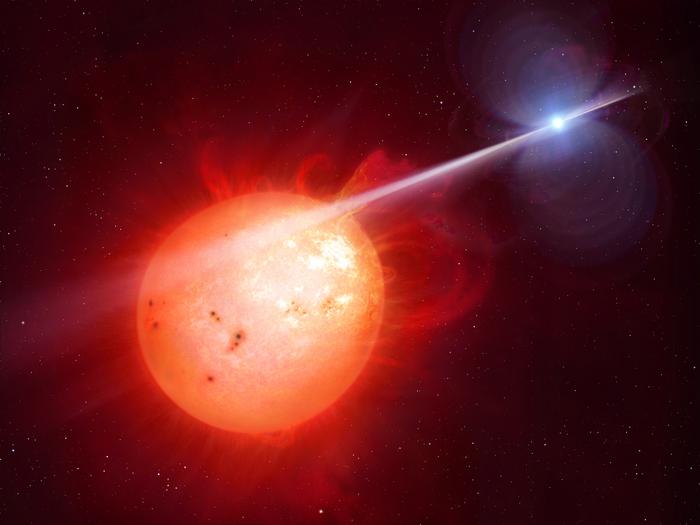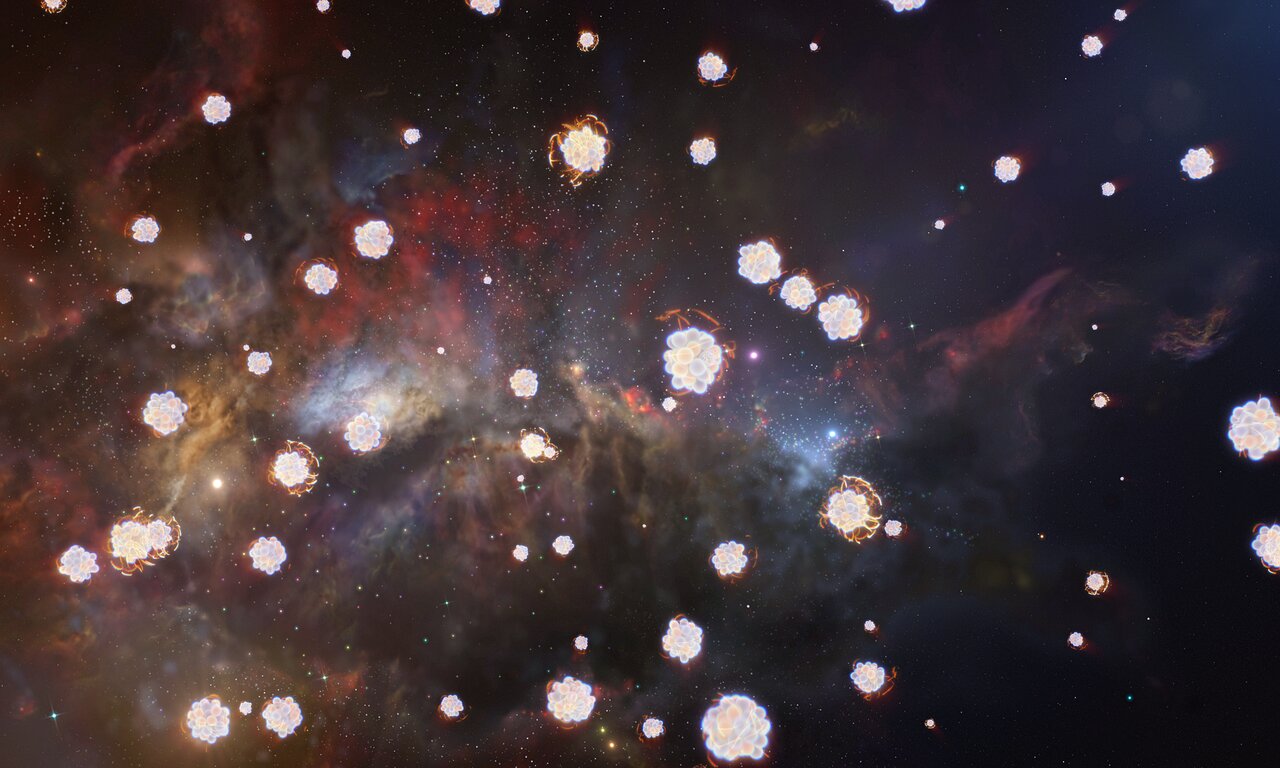
An unidentified source has been beaming out a pulse of radio waves every 22 minutes since 1988, astronomers say.

In a first, the James Webb Space Telescope (JWST) may have glimpsed a rare type of star that astronomers aren’t even sure exists. These “dark stars” might not have been fueled not by nuclear fusion but by the self-annihilation of dark matter.

Meteor-like fireballs in the atmosphere of the Sun rain down like showers of shooting stars during the phenomenon of coronal rain, scientists have found.

Whenever something happens with Betelgeuse, speculations about it exploding as a supernova proliferate. But when will the explosion happen?

Astronomers have just found a second example of a white dwarf acting as a pulsar, following the first discovery in 2016.

Using the Green Bank Telescope (GBT), US astronomers have detected a new binary millisecond pulsar. The newly found pulsar, designated PSR J0212+5321, belongs to the "redback" subclass and is located relatively nearby.

A group of Australian space scientists discovered a white dwarf star that appears to be in the beginning stages of crystallizing into a celestial diamond.

Astronomers studying black holes have serendipitously found another rarity: a dead star rocketing away from its birth supernova, leaving a comet-like trail of radio emission in its wake.

For the first time ever, we were able to identify the chemical traces of the explosions of the first stars in very distant gas clouds.

An accretion disk is a colossal whirlpool of gas and dust that gathers around a black hole or a neutron star as it pulls in material from a nearby star. As the disk spins, it whips up powerful winds that can affect the surroundings of black holes.

Scientists believe the gamma-ray emission, which lasted over 300 seconds, is the birth cry of a black hole, formed as the core of a massive and rapidly spinning star collapses under its own weight.

New findings suggest the water originates from the space between solar systems, billions of years before the birth of our sun.

In giant clusters of hundreds or thousands of galaxies, innumerable stars wander among the galaxies like lost souls, emitting a ghostly haze of light. These stars are not gravitationally tied to any one galaxy in a cluster.

The aftermath of an epic collision involving at least one neutron star has been captured for the first time in the millimeter range of radio frequency wavelengths.

Far out in the Milky Way, roughly 22,000 light years from Earth, a star unlike any other roars with a magnetic force that beats anything physicists have ever seen.